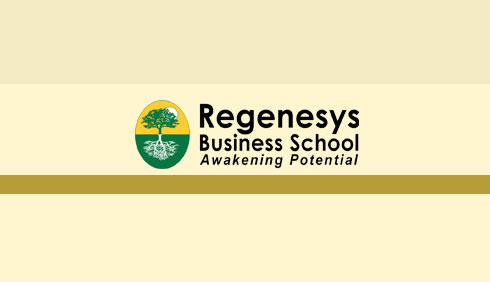China recently posted 7% economic growth, which was higher than expected. Surprisingly, this was for the last quarter. Is your business even contemplating 7% growth per quarter? Or do you believe that the economic conditions, and the world as it stands today, is shaping a reality in which negative or no returns are acceptable?
You may argue that China has the benefit of an expanding population, strong control over resources and clear strategies to ensure that they incentivise the correct behaviour for growth. For most businesses there is a massive market that has never consumed their product. These businesses have direct control over the message they send into the market and over people who are willing to work to make the business work. It seems that the missing ingredient is thus a clear strategy for deployment.
The goals and strategy portfolio of a business collectively describe where it is going. The portfolio remains the single most important aspect a business should get right. There seems to be a continuous gap between strategy and execution - but without strategy, execution will fail.
To understand strategy in the context of growth and development, we have to consider the following key drivers:
Below are some primary drivers of business growth:
Expected investor returns - the bottom line
Investment to meet future goals - capex for growth
Operational renewal - capex for efficiency
Investment in reserves - investment for sustainability
Sustainable contribution to society - non revenue generating investment
One way to map your growth is to take a percentage for each of the above and assign a number to it. Add this as a total or as percentages and you get a growth rate. If you just look at it at a high level, this simply implies that you need to get a 30% - 50% annual return just to stay in business.
To find out how much of your profit your investors expect, do a simple calculation:
Take what your business received as a profit line in the last (financial) year
Add what you could receive when investing in retail bonds (e.g. 8%) - this is called the 'risk free rate'
Add what the stock market achieved last year and minus the risk free rate (e.g. 22% - 8% = 14%)
If your industry is particularly risky, then multiply the number acquired before by 1.5. If it is less risky, you can get closer to 1
This gives you the expected return on capital from an investor, which for a relatively stable business, should be in the range of about 35%.
So your strategy needs to ask how you are going to achieve this on at least a quarterly basis. To get to a 50% return annually, you will need to get at least 9 - 10% quarterly. And this excludes any planned growth.
Accordingly, strategy essentially asks if you have plans in place to achieve the necessary revenue and growth to not only reward investors for their capital, but also to sustain and increase the capacity of the business for the future.
A confusing factor for some businesses is to determine the difference between a goal, strategy, objective, result, project, operation, task, motivator, driver and a business model or architecture. As a result, goals that are actually strategies or tasks are defined. Then we are surprised when the business does not improve and go where we intended. The phenomena of goal confusion forces us to ask: Where do we set our goals for success?
Also unhelpful are the many demands on a corporate organisation to have policies and accountabilities for an ever-increasing range of areas and initiatives when it is not always clear how this fits into the goal process.
On the whole, we must ask: Are we here to run policies or are we here to achieve goals? We all understand that policies are a world onto themselves. We also know that they can either undermine or support goals.
A clear guide to understand how it all works would be helpful.
The process of goal setting
The easiest place to start would be to describe a goal, mainly because we all have them. A goal is as simple as defining something that needs to get done.
We may want to go to point A, or do something, or make 100 items of a specific type. The goal that gets established should be S-M-A-R-T (Simple, Measurable, Attainable, Realistic and Time-bound). The goal may be: “For the Manufacturing Team to make 100 of Item X using Machine Y, at a cost of $ Z, before the end of January 2014, for delivery to sales." This goal is clear because it says who will do it, how much it will cost, and by when it will be done. It also answers other questions around what; how; and what next.
The key to goals is that you need to differentiate whether they are objectives or key results. A very common approach is called management by objectives, or Objectives and Key Results (OKR’s). The basic idea is that you set 3 - 5 objectives (goals) as a company, 3 - 5 objectives (goals) as a team, and 3 - 5 objectives as an individual. The team objectives are linked to the company objectives. A team may be responsible for one (or part) of the company objectives. The same counts for the individual.
To determine what you are actually going to do, the Key Results describes the specific initiatives that you will be taking to achieve your Key Results Areas. These are measured on a scale of achievement. The Key Results are the projects that you run for the quarter, the initiatives that you drive, and the results that you deliver.
As a reality check, you have to ask yourself if these goals and results areas will achieve the anticipated return for your investors. This can also be an interesting reality check for most strategies.
A good goal framework gets reviewed quarterly and contains objectives and key results that only get carried forward if they continue to add value to the organisation. An interesting note is that companies increasingly delink their goals from their performance reviews. This seems contradictory, but it happens because performance presents a more holistic review of the individual's job performance with a view towards enhancement. On the other hand, goals are the 'business of business'.
A number of studies have shown that people tend to misrepresent their goals when it is linked to their compensation. In order to solve this issue, the delinking of goals and performance seems to be working for large corporates. Make no mistake, your performance on your goals will still be reviewed when you apply for a promotion. However, there would be less focus on a quarterly performance-score based on your goals, to determine your bonus, and more focus on achieving the result for the business. This also allows the business to publish the goals of individuals and teams so that they can start working together and also know who is responsible for what.
Policies are usually set to capture past learning, manage risk and create predictable outcomes in routine areas. Policies must be reviewed to determine if they add value to the business. It remains important to assess the real cost of a policy over time. Policy will very seldom feature in the objectives of a company.
Top level objectives come from the organisation's strategy and make up the five things that will give investors their expected return in the first quarter. These objectives also look at the things that we will setup for next quarter. So, if you have asked yourself about the 20 things that are going to generate money for your company this year, you should also go and check that you can make at least 30% - 35% out of each of these initiatives. Then you should be on a winning path in making the business move forward.
Conclusion
Goals can be tricky - simply because they often get set at the wrong level. This article shows that if you link your goals to your investor, revenue and growth objectives, you can make the most out of your teams and individuals and drive the results to get you to the end. Someone still needs to do the work and it is always important to remember that no amount of planning will substitute action. Having better and more focused goals will allow you to start getting there.
- Regenesys
 Top Zimbabwe business executive arrested for fraud
Top Zimbabwe business executive arrested for fraud  South Africa is in serious trouble
South Africa is in serious trouble  US halts visa services for Zimbabwean nationals
US halts visa services for Zimbabwean nationals  ZSE and VFEX recover after weak 1st half
ZSE and VFEX recover after weak 1st half  Gold edges up as traders await guidance
Gold edges up as traders await guidance  Zimbabwe Agricultural Show 2025 kicks off
Zimbabwe Agricultural Show 2025 kicks off  Young Investment Professional (YIP) Graduate Programme 2019
Young Investment Professional (YIP) Graduate Programme 2019 










 Young Investment Professional (YIP) Graduate Programme 2019
Young Investment Professional (YIP) Graduate Programme 2019
Editor's Pick